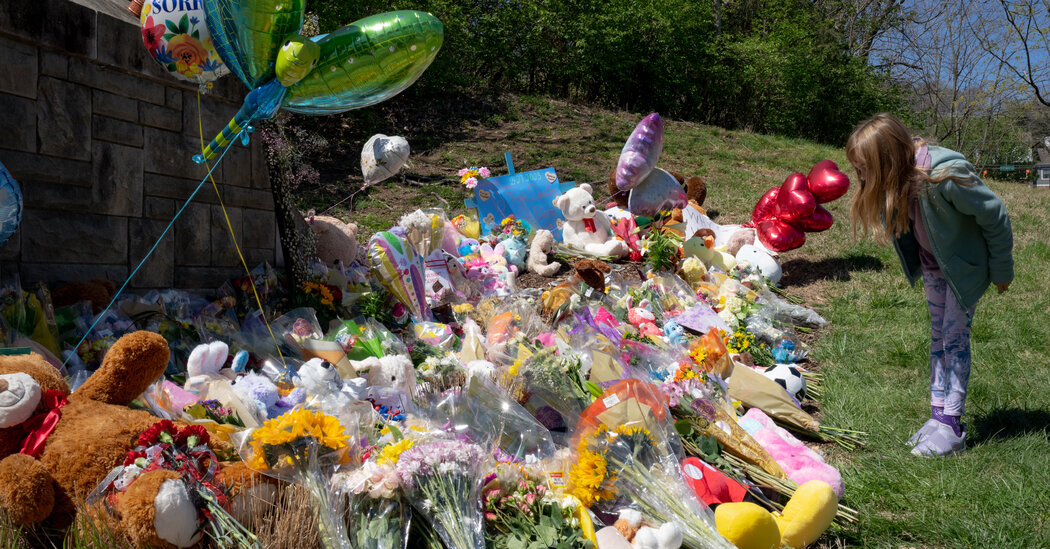Ukraine’s Counteroffensive: What to Know
Even President Volodymyr Zelensky of Ukraine now says so: The country’s long-awaited counteroffensive to retake Russian-occupied territory has begun. After months of defending against a barrage of airstrikes, Ukraine is on the offense, looking for vulnerabilities along the 600-mile front line and even launching strikes on Russian soil.
But after days of sometimes intense battles, it has been difficult to figure out the state of play in Ukraine. Why do we not have a better idea of whether the counteroffensive is succeeding? It’s complicated, for a number of reasons related to how wars are fought. Here’s why.
Offense is harder than defense.
Military history has long shown that it is much harder to take territory than it is to defend it. This is partly why Russian troops did not make it to Kyiv, Ukraine’s capital, last year after President Vladimir V. Putin sent them across the border.
Their convoys got bogged down and became sitting ducks for Ukrainian troops armed with shoulder-fired missiles. Their air force largely cowered at the border because of Ukraine’s mobile air defenses, and their inability to conduct combined arms warfare (when all parts of the military know what the others are doing and coordinate) meant Mr. Putin’s plans to take the entire country have not come to fruition.
But he did manage to take territory in eastern and southern Ukraine. Since then, Russian troops have been using their time as occupiers to dig in and build fortifications to defend.
Now it is Ukraine that is counterattacking, and the Russians have been preparing.
“Russian fortifications in Ukraine are the most extensive defensive works in Europe since World War II,” the military analysts Seth G. Jones, Alexander Palmer and Joseph S. Bermudez Jr. wrote in a paper released last week by the Center for Strategic and International Studies. “The Russian military has constructed trenches, minefields, dragon’s teeth and other barriers to slow Ukrainian forces during offensive operations.”
This means that advancing Ukrainian troops need to look for areas where Russian defensive lines are weak and poorly reinforced before trying to punch through, military experts say. At the same time, Ukrainian troops must try not to let weak spots coax them into venturing too deep behind enemy lines before they have adequate reinforcements.
Dragon’s teeth?
During World War II, Germany used reinforced concrete pyramids to repel Allied tanks. The general idea was that rows of the evenly spaced structures — some with land mines nestled between them — would force tanks into positions where they could be more easily targeted.
The pyramids were called dragon’s teeth because, at about three to four feet tall, they resembled a fanged mouth.
Satellite imagery showed this year that Russian forces had erected dragon’s teeth barricades between anti-tank ditches and trenches through eastern Ukraine and toward Crimea.
Will Ukraine suffer a lot of casualties in the counteroffensive?
That is already happening. U.S. officials have confirmed that Ukrainian troops have suffered casualties and equipment losses in the early fighting. Little information is available on Russian losses, but the officials pointed out that attackers typically suffer heavier initial casualties than dug-in defenders, for the reasons outlined earlier.
On D-Day, for instance, German casualties were estimated to be 4,000 to 9,000 killed or wounded, while Allied casualties were documented at about 10,000, with 4,414 confirmed dead.
Videos and photographs posted last week by pro-war Russian bloggers, which were verified by The New York Times, showed that at least three of the Ukrainians’ German-made Leopard 2 tanks and eight of their American-made Bradley fighting vehicles had been recently abandoned or destroyed.
Does that mean the counteroffensive is failing?
No. Two U.S. officials said on Monday that the main thrust of the counteroffensive had probably not begun. The bulk of the nine Ukrainian brigades that were trained over the past year and a half by American and allied countries have yet to engage in the fight, one of the officials said.
“When we see large, armored formations in the attack, then I think we’ll know the main attack has really started,” Frederick B. Hodges, a former top U.S. Army commander in Europe, said in an email. “To date, I don’t think we’ve seen those large armored formations, i.e. several hundred tanks and infantry fighting vehicles.”
He added that a Ukrainian tank battalion was intended to have 31 tanks, and an armored brigade would have some 250 armored vehicles of different types. Such a large fighting formation would be easily spotted by satellite imagery.
“When we see two or three of those brigades focused on a narrow front somewhere, then I think we can say that the main attack has started and where,” General Hodges said. “But even then, that is not certain. The Ukrainian General Staff will want to keep the Russians guessing about the location of the main attack for as long as possible.”
The Allies did the same thing on D-Day, keeping secret the whereabouts of Operation Overlord and misdirecting the Germans, who thought the offensive was more likely to happen in the north of France, near Calais, than in Normandy.
Could Ukraine use an element of surprise?
Possibly, but it would be hard. Modern warfare comes with satellite imagery available to adversaries. Ukraine cannot sneak 150,000 troops to Russian lines, as the Allies did in Normandy.
“The Germans would have been able to see that through satellites” if such technology had been available, Mr. Jones, of the Center for Strategic and International Studies, said in an interview. “So you don’t have that option.”
What Ukraine does have, he said, is what it is doing right now: launching attacks in various sites, looking for weaknesses but also forcing the Russians to try to defend in multiple places.
What’s more, Mr. Jones said, Ukraine has its own satellite imagery.
“What we’re seeing right now, I think, is the Ukrainians testing for the weak spots in the Russian lines,” he said. With some poorly defended areas, “there definitely is the possibility for the Ukrainians to punch through crappy fortifications and poor Russian forces that are defending those areas.”


